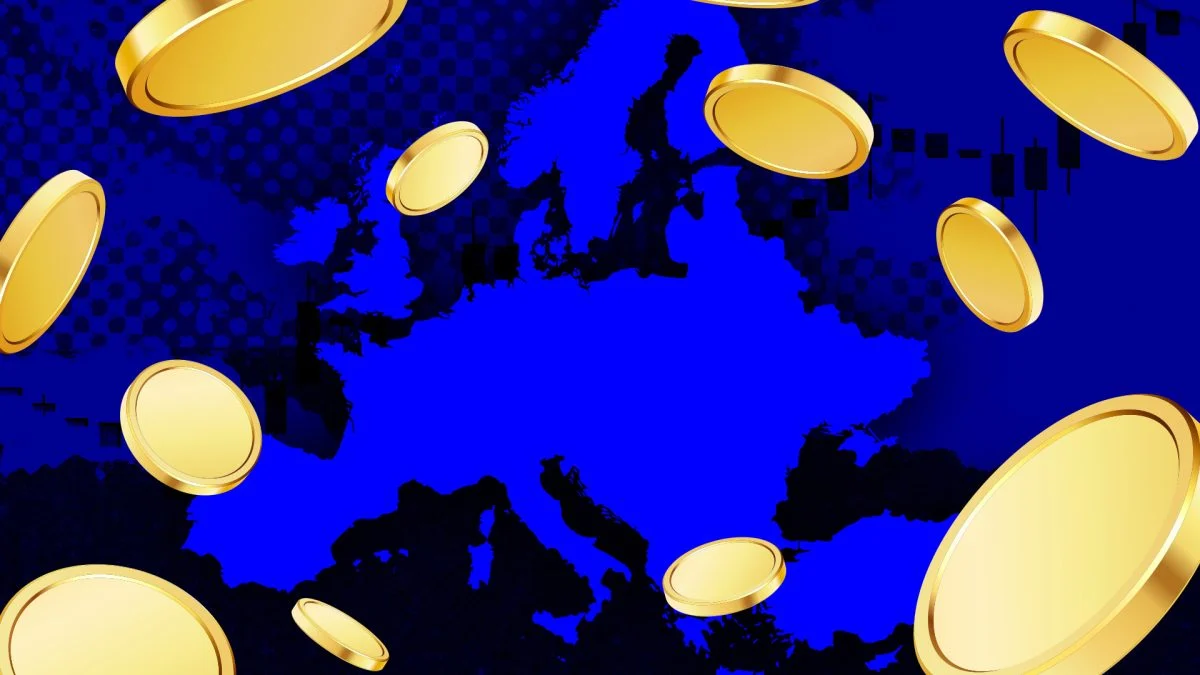
- The European Union (EU) has adopted a cryptocurrency taxation framework that includes the automatic exchange of information on crypto-assets.
- The core objective of the newly adopted directive is to broaden the scope of registration and reporting obligations.
- The provisions of DAC8 align with the Crypto-Asset Reporting Framework (CARF) and amendments to the Common Reporting Standard (CRS).
In a significant move aimed at addressing the challenges posed by the digitalization of the economy, The European Union (EU) has adopted a cryptocurrency taxation framework that includes the automatic exchange of information on crypto-assets. The changes primarily revolve around the reporting and automatic exchange of information concerning transactions involving crypto-assets and advance tax rulings for high-net-worth individuals. This directive marks a pivotal step toward strengthening administrative cooperation among EU member states and enhancing the cryptocurrency taxation framework.
The directive’s scope and objectives
The core objective of the newly adopted directive is to broaden the scope of registration and reporting obligations while promoting overall administrative cooperation among tax authorities. The directive includes a comprehensive framework for writing and automatically exchanging crypto-asset information. Only now, the decentralized nature of crypto-assets has presented challenges to tax administrations in ensuring tax compliance. The cross-border nature of these assets necessitates robust international administrative cooperation to facilitate effective tax collection.
The directive encompasses various categories of assets and income, particularly crypto-assets, in alignment with the definitions outlined in the regulation on markets in crypto-assets (MiCA). This includes crypto-assets issued in a decentralized manner, stablecoins, e-money tokens, and specific non-fungible tokens (NFTs). By incorporating these categories, the EU aims to create a more inclusive and efficient cryptocurrency taxation framework.
The historical context of cryptocurrency taxation in the EU
The European Union (EU) has worked on a cryptocurrency taxation framework for several years. In 2018, the European Commission published a report on the taxation of virtual currencies, which outlined the main challenges and proposed several recommendations. Then, in 2020, the Commission published a consultation document on the taxation of the digital economy, which included a section on crypto assets.
In 2021, the Commission published a proposal for a Directive on the taxation of digital assets. The European Parliament and the Council of the EU are currently debating the directive. If adopted, the directive would require EU member states to impose taxes on income from crypto assets, including capital gains and transaction taxes.
In addition to the EU-level work, several EU member states have already introduced cryptocurrency taxation rules. For example, Germany, France, and the United Kingdom all tax crypto assets as capital gains. Some member states, such as Portugal and Malta, have introduced more favorable tax regimes for crypto assets.
Background and key milestones
The journey towards this directive began with the Council’s report to the European Council on tax issues in December 2021. It highlighted the need to address tax-related challenges posed by crypto-assets and high-net-worth individuals. In response, the European Commission presented a legislative proposal in December 2022. It led to the subsequent adoption of this directive.
The directive’s primary objectives can be summarized as follows:
Expanding Automatic Exchange of Information
The directive extends the scope of automatic exchange of information under Directive 2011/16/EU on administrative cooperation in the field of taxation (DAC8). Crypto-asset service providers must report information regarding transactions involving crypto-assets and e-money.
The expansion aims to help EU member states adapt to the digitalization of the economy. The provisions of DAC8 align with the Crypto-Asset Reporting Framework (CARF) and amendments to the Common Reporting Standard (CRS) developed by the OECD under the G20’s mandate. The G20 has endorsed both CARF and the CRS amendments as integral additions to global standards for the automatic exchange of information.
Advance Cross-Border Rulings
The directive also includes provisions on the automatic exchange of advance cross-border rulings concerning high-net-worth individuals. This addition aims to reduce the risks of tax evasion, tax avoidance, and tax fraud. The existing provisions of DAC needed to cover these adequately.
Amendments to Existing Provisions
To further enhance the effectiveness of taxation measures, the directive proposes amending various existing provisions of DAC. This includes improvements to the rules on reporting and communication of the Tax Identification Number (TIN). These will help tax authorities identify relevant taxpayers and correctly assess related taxes. Additionally, member states are to apply penalties for non-compliance with national legislation on reporting requirements as adopted under DAC, as the directive addresses.
Key Developments and Adoption
- On May 16, 2023, the Council agreed on its position regarding the amendments proposed in the directive. This marked a crucial step toward the directive’s adoption.
- On September 13, 2023, the European Parliament adopted its opinion on the directive, following the consultation procedure. This opinion reflects the EU’s commitment to enhancing taxation measures and ensuring a fair and efficient tax system.
- Finally, EU member states in the Council adopted the directive unanimously. Following this agreement, the directive will be published in the Official Journal and is set to enter into force on the twentieth day following its publication.
Setting a precedent for International taxation efforts
Adopting the directive amending EU rules on administrative cooperation in the area of taxation signifies a substantial step forward in addressing contemporary challenges posed by the digitalization of the economy. By extending the scope of reporting and automatic exchange of information to encompass crypto-assets and advance tax rulings for high-net-worth individuals, the EU aims to strengthen administrative cooperation among tax authorities and improve tax compliance.
The directive’s broad scope, covering various categories of assets and income, including crypto-assets, stablecoins, and NFTs, underscores the EU’s commitment to adapting tax regulations to evolving economic landscapes. With this directive, the EU continues to play a leading role in shaping global standards for taxation in the digital age. Meanwhile, promoting transparency and combating tax evasion and fraud.
As this directive comes into effect, it will serve as a cryptocurrency taxation framework for other regions to consider when addressing the unique challenges presented by digital assets and high-net-worth individuals in the context of cryptocurrency taxation.
The directive will also have a significant impact on the crypto industry. Many concerns have been raised over the intersection of cryptocurrency and anti-money laundering (AML) efforts. Information sharing on the level at which the EU proposes can impact cryptocurrency worldwide. The EU’s proactive stance sets a significant precedent for international efforts. To ensure fair and effective tax collection in an increasingly digital world.
- SEO Powered Content & PR Distribution. Get Amplified Today.
- PlatoData.Network Vertical Generative Ai. Empower Yourself. Access Here.
- PlatoAiStream. Web3 Intelligence. Knowledge Amplified. Access Here.
- PlatoESG. Carbon, CleanTech, Energy, Environment, Solar, Waste Management. Access Here.
- PlatoHealth. Biotech and Clinical Trials Intelligence. Access Here.
- Source: https://web3africa.news/2023/11/02/news/eu-adopts-cryptocurrency-taxation-framework/
- :has
- :is
- 13
- 16
- 2018
- 2020
- 2021
- 2022
- 2023
- 7
- a
- adapt
- adapting
- addition
- Additionally
- additions
- address
- addresses
- addressing
- adequately
- Administrations
- administrative
- adopted
- Adoption
- advance
- age
- agreed
- Agreement
- aimed
- aims
- align
- alignment
- All
- already
- also
- amendments
- AML
- among
- an
- and
- anti-money laundering
- Apply
- ARE
- AREA
- around
- AS
- assess
- Assets
- At
- Authorities
- Automatic
- automatically
- BE
- been
- began
- both
- broad
- broaden
- by
- CAN
- capital
- capital gains
- categories
- challenges
- Changes
- collection
- combating
- comes
- commission
- commitment
- Common
- Communication
- compliance
- comprehensive
- concerning
- Concerns
- Consider
- consultation
- contemporary
- context
- continues
- cooperation
- Core
- correctly
- Council
- cover
- covering
- create
- cross-border
- crucial
- crypto
- Crypto Industry
- crypto-assets
- cryptocurrency
- currencies
- Currently
- day
- debating
- December
- december 2021
- decentralized
- definitions
- developed
- developments
- digital
- digital age
- Digital Assets
- Digital economy
- digital world
- digitalization
- document
- e-Money
- EC
- Economic
- economy
- effect
- Effective
- effectiveness
- efficient
- efforts
- encompass
- encompasses
- enhance
- enhancing
- ensure
- ensuring
- Enter
- EU
- Europa
- European
- european commission
- European Parliament
- european union
- European Union (EU)
- evasion
- evolving
- example
- exchange
- exchanging
- existing
- expansion
- extending
- extends
- facilitate
- fair
- favorable
- field
- following
- follows
- For
- Force
- Forward
- Framework
- France
- fraud
- from
- further
- G20
- Gains
- Germany
- Global
- Have
- help
- Highlighted
- historical
- HTTPS
- Identification
- identify
- if
- Impact
- impose
- improve
- improvements
- in
- included
- includes
- Including
- Inclusive
- Income
- incorporating
- increasingly
- individuals
- industry
- information
- integral
- International
- intersection
- into
- introduced
- involving
- Issued
- issues
- IT
- ITS
- journal
- journey
- Key
- Kingdom
- Laundering
- leading
- Led
- Legislation
- Legislative
- legislative proposal
- Level
- Main
- Malta
- mandate
- manner
- many
- marked
- Markets
- May..
- Meanwhile
- measures
- member
- MiCA
- more
- move
- must
- National
- Nature
- necessitates
- Need
- needed
- newly
- NFTs
- non-fungible
- non-fungible tokens
- NON-FUNGIBLE TOKENS (NFTS)
- now
- number
- objective
- objectives
- obligations
- OECD
- of
- official
- on
- only
- Opinion
- Other
- outlined
- over
- overall
- parliament
- particularly
- pivotal
- plato
- Plato Data Intelligence
- PlatoData
- Play
- Portugal
- posed
- position
- Precedent
- presented
- primarily
- primary
- Proactive
- procedure
- promoting
- proposal
- proposed
- proposes
- providers
- Publication
- published
- raised
- recommendations
- reduce
- reflects
- regarding
- regimes
- regions
- Registration
- Regulation
- regulations
- related
- relevant
- report
- Reporting
- require
- Requirements
- response
- risks
- robust
- Role
- rules
- s
- scope
- Section
- September
- serve
- service
- service providers
- set
- Sets
- several
- shaping
- sharing
- shift
- signals
- significant
- signifies
- some
- specific
- Stablecoins
- stance
- standard
- standards
- States
- Step
- Strengthen
- strengthening
- subsequent
- substantial
- such
- system
- tax
- Tax Evasion
- Taxation
- Taxes
- taxpayers
- that
- The
- The Area
- the United Kingdom
- then
- These
- this
- to
- Tokens
- toward
- towards
- transaction
- Transactions
- Transparency
- true
- unanimously
- under
- underscores
- union
- unique
- United
- United Kingdom
- various
- Virtual
- virtual currencies
- webp
- when
- which
- while
- will
- with
- Work
- worked
- world
- worldwide
- would
- writing
- years
- zephyrnet













